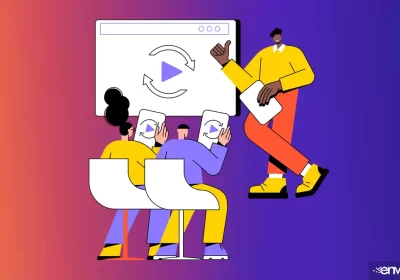6 Common SEO Mistakes and How To Avoid Them

This article is about the top 6 common SEO mistakes that many new website owners and even experienced bloggers make.
What Is SEO?
First, let’s talk about what SEO is. SEO is the acronym for Search Engine Optimization. In short, it is the process of improving your website to increase its visibility in search results whenever people search for services you provide, products you sell, and articles you’ve written.
When your pages have good visibility in search results, they are more likely to be found and clicked on. In either case, the goal of search engine optimization is to attract website visitors who will become clients, customers, or even an audience.
Common SEO Mistakes and How To Avoid Them
Because SEO learns to understand what people are searching for online, it will help you to connect with people who are searching for the solutions you offer. With this in mind, let’s discuss the top 6 common SEO mistakes and how to avoid them.
1. Not Optimizing Images
Image optimization consists of compressing your images into the smallest file size possible. The reason most people don’t do this is because they think it will affect the quality of the image. Photographers in particular, will often upload photos with 300 resolution. That high quality is ideal for print, but is overkill for online. Not to mention, the large file sizes you end up with is the biggest reason for slow web pages.
There are many types of programs you can use to compress your images before uploading to your website as well as after you have uploaded them. For instance, Photoshop is an excellent program for optimizing your images before uploading. It offers several file formats for image output such as .jpg, .webp, .png and more. Did you know that a .webp image format offers the same quality as a .jpg, but as a much smaller file size?
Online applications like TinyPNG offers a free image compression service. Not only can you use the service from their website, but they also provide a plugin to use on your own website that automatically compresses images after you upload them.
2. Failing To Do Keyword Research
Keyword research helps you to identify the popular words and phrases people enter into search engines. This core SEO task gives you a better understanding of the demand for certain keywords. If the demand for a keyword is high, it will be difficult to compete for those terms in organic search results.
Ultimately, the goal with keyword research is to create targeted content that drives the right traffic to your website. Traffic that is more apt to convert.
So, how do you do keyword research? Generally, people start off using Google AdWords Keyword Planner. However, there are limitations to using Google Keyword Planner. For instance, it only shows generic, broad keywords rather than specific and long-tail ones. But once you’ve identified some of the main keywords, you can start using Moz Keyword Explorer. At this point, you’ll be able to drill down to the longtail keywords that you need for your website.
3. Omitting The Keyword In The Alt-Text Image
As a principle of web accessibility, alt text (alternative text) is used to describe images to the visually impaired via screen readers. For this reason, it’s important to include alt text in your images so that any visually impaired person can understand what the image is about. In addition, alt text allows search engine bots to get a better idea of what the image represents for your page. Also, the alt text will display in place of an image if it fails to load.
Here are two examples of alt text usage:
Bad:
<img src="loaf-bread.jpg" alt="load bread, loaf bread jpg">
Good:
<img src="loaf-bread.jpg" alt="Fresh loaf bread sitting on a kitchen countertop">
4. Using Invalid Characters In The File Name
Another common SEO mistake is using invalid characters in the file name or the alt text image. Each web application is different, and not all of them can interpret separators like spaces ($20), plus signs (+), or underscores (_).
In addition, search engines don’t understand how to separate words in URLs that run together without a separator (example.com/commonseomistakes/). Instead, use a separator like the hyphen character (-) to separate words in a URL.
Example.com/common-seo-mistakes is a better choice for your URL or file name, rather than using the other types of characters or running words together.
5. Not Putting The Keyword In The Image Name
Everything requires planning when it comes to a website and its content. As such, you should create the web page or article before you start selecting and naming images for it. Otherwise, you will end up with generic image filenames that don’t relate to what your page or post is about.
Once you decide what the page or post is about, select your focus keyphrase. Then you’ll be able to use that focus keyphrase when naming your image before you upload it.
6. Avoid Keyword Stuffing
Keyword stuffing happens when you overuse a keyword or keyphrase in a page, post or image. There needs to be a balance between the number of times you use a keyword in your content. So, use a short, descriptive filename for your images that includes your keyword or keyphrase.

Hazel Burgess
FOUNDER/SEO DIRECTOR
Hazel is the Founder & SEO Director at Envisager Studio, a premier website design agency specializing in WordPress website design, development and internet marketing. In her spare time, she writes about search engine optimization, website design, and internet marketing.


